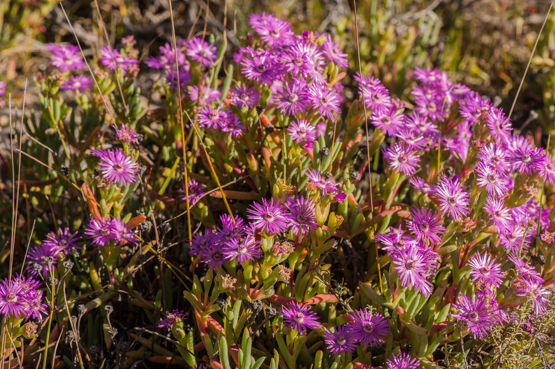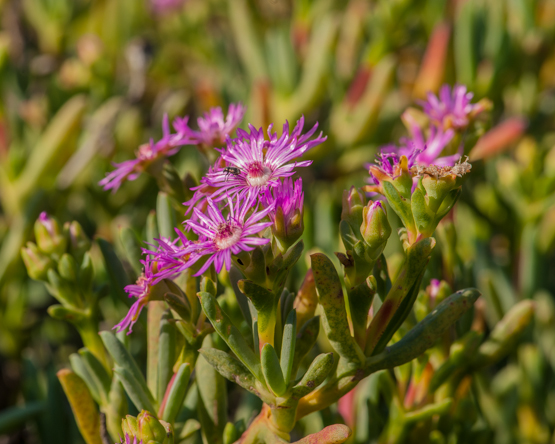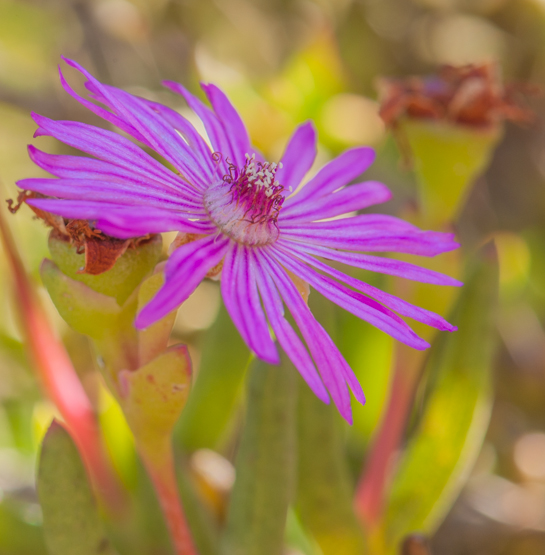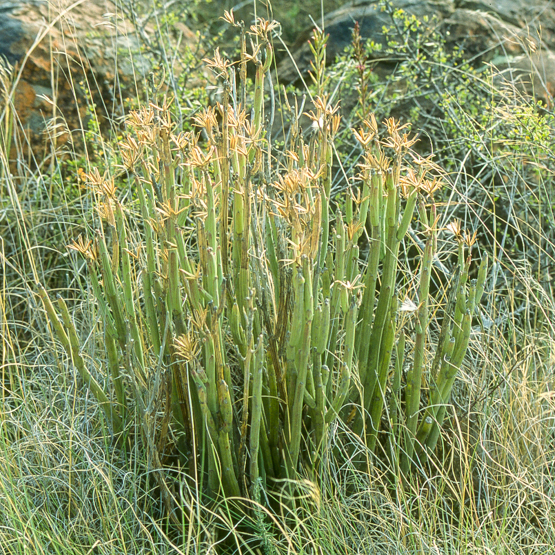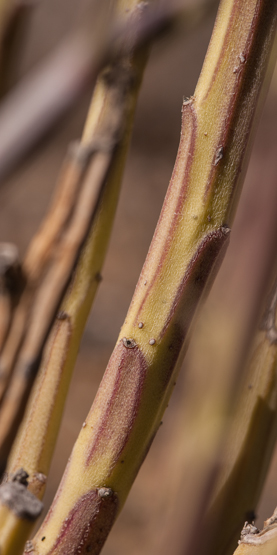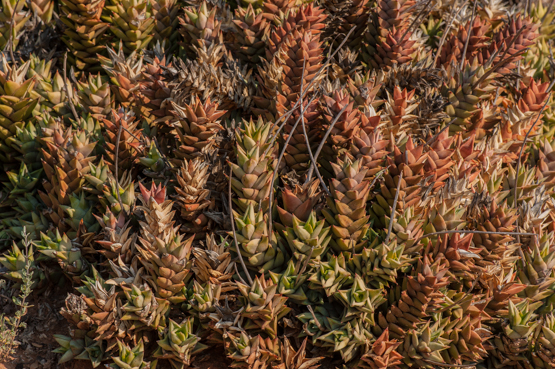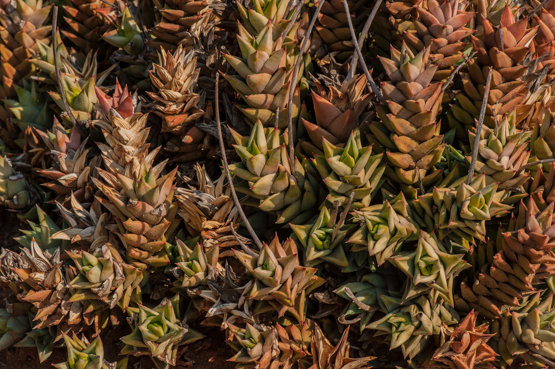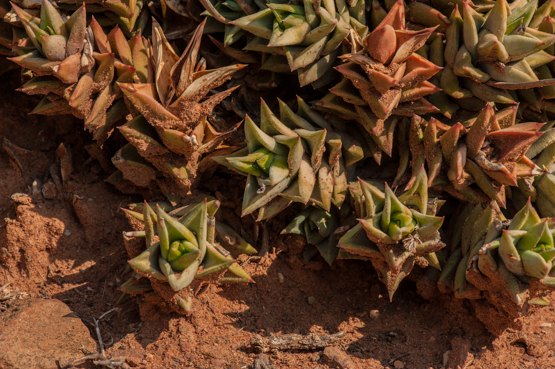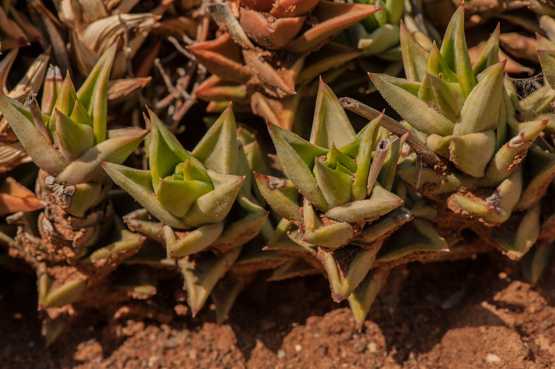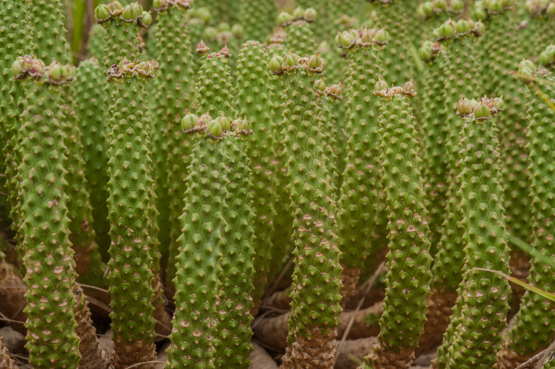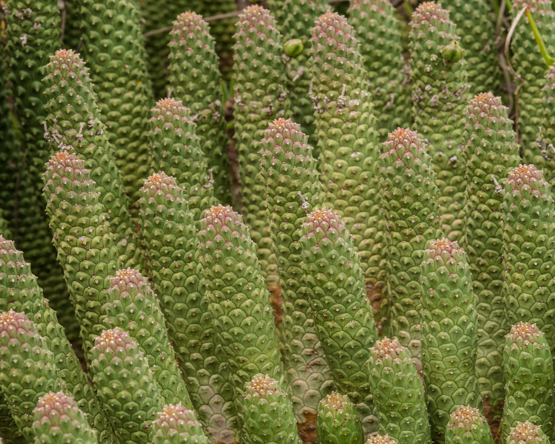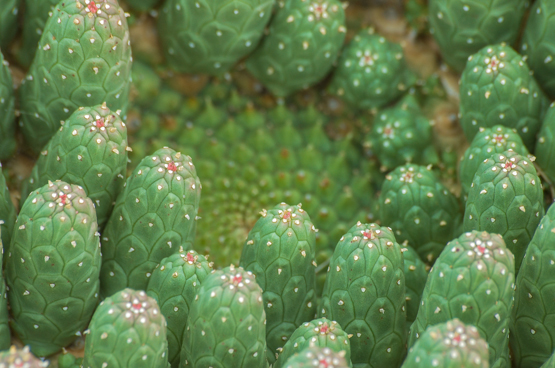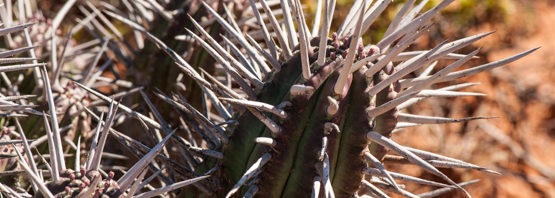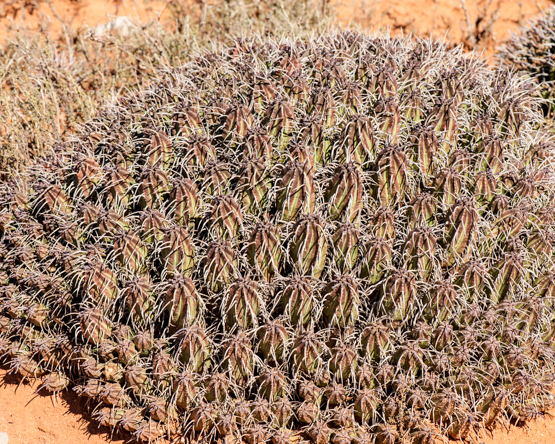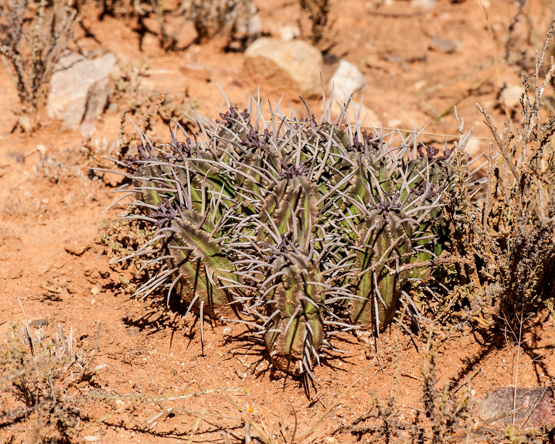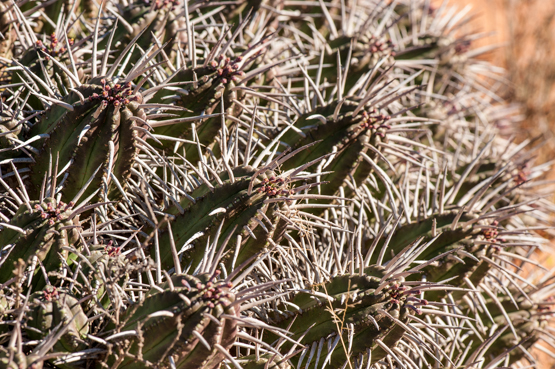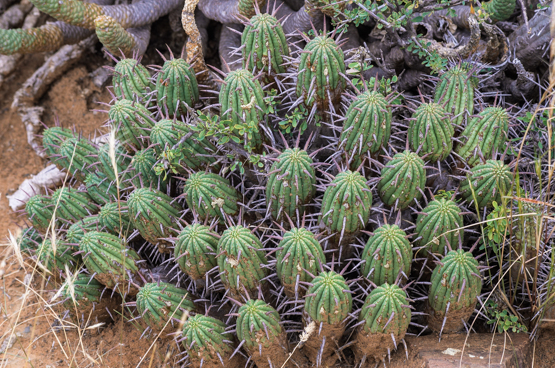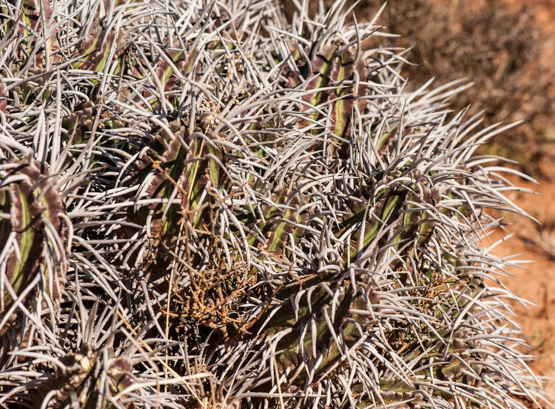In spring (August-September), this is one of the many Mesemb species decorating the countryside with their colourful flowers.
It occurs from my area northwards to Clanwilliam on sandy and clayey soils.
The shrubs are up to 60 cm in height and 80 cm in diameter, with decumbent* grey to reddish branches (* creeping on the ground with the tips curved upwards).
The flowers are 2-2.5 cm across and pink to magenta with a darker midline.
Looking at the pictures you will notice that the last one gives a rather different impression of the flowers. It was taken in the shade and very slightly overexposed. This combination gives a result that I find rather pleasing to the eye.
